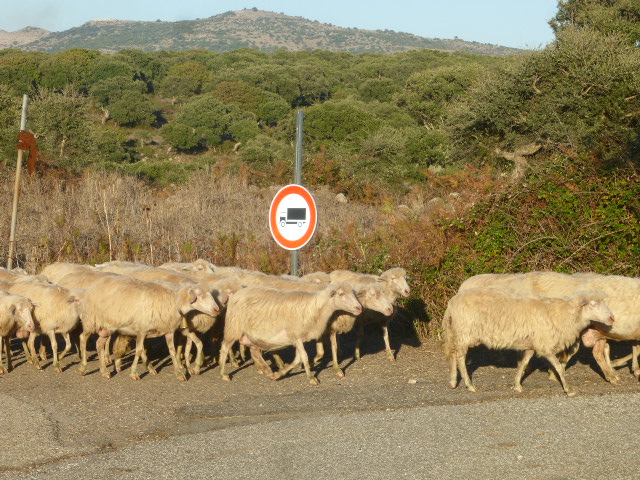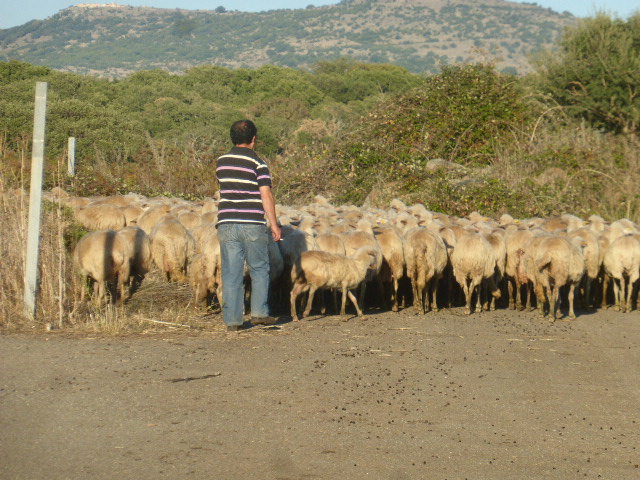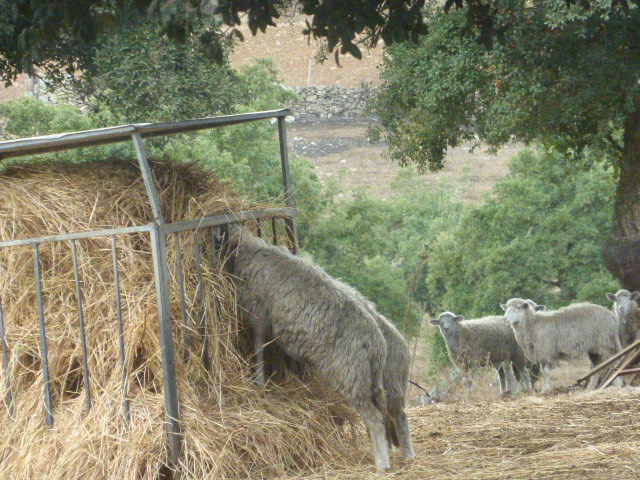
Written by PASTRES core researcher Michele Nori
The COVID-19 crisis generates uncertainties we seem unable to bear and manage. It also serves to provoke deep insights into societal dynamics, contributes to unveiling hidden fragilities as well as capacities and reflects on our diverse lifestyles and opportunities. This crisis challenges the main pillars of our society: it affects mobility, sociality, relationships and exchanges. Pastoralists, whose economy is mobile and involves deep interdependency, are particularly vulnerable to such conditions. But they show, as well, specific capacities and skills that we all could learn from about ‘living with uncertainty’, as is the mandate of the PASTRES project.
The response to the COVID crisis has implied restrictions in mobility and movements, with evident and burgeoning impacts on the economies of pastoral farms. Access to pastures and markets rank amongst the highest and most problematic issues. Here is a collection of cases and situations from southern Europe, gathered with the assistance of Rete Appia (www.retepastorizia.it), that provide insights into the vulnerabilities exacerbated by the pandemic, as well as into the coping mechanisms that pastoralists are deploying.
Marketing problems for animal products
The sale of lambs for Easter festivities represents, for most Mediterranean pastoralists, a main source of income. This year this option has been heavily affected by the constraints to marketing and blockages in the value chain. Many pastoralists traditionally sell lambs locally at the farm gate and this has, in certain cases, been feasible even during the lockdown. But for many pastoral farms in Spain, Italy and France the huge drop in lamb sales represents a dramatic shock. With high uncertainties in relation to the supply chains and to the consumption of lamb, which cannot be kept frozen for too long, many farmers have found it difficult to estimate the number of lambs to be slaughtered and shipped. This problem is compound by the fact that farmers will have to account for unsold lambs and for many more animals than planned. This risks putting a further strain on pastoralist economies due to the fact that a larger flock demands increasing expenditure, the more so with lambs.
Some southern EU producers are now looking at the Maghreb and Mashreq meat markets for the Haj festivities and analyses and negotiations have been launched accordingly. However, in order to access this markets, they will have to compete with many other pastoral production areas, as the closure of most international frontiers is likely to complicate livestock exports in other regions. Indications are that the traditional flooding of animals from the Horn of Africa to the Arabian Peninsula, involving millions of small ruminant heads, is likely to be problematic this year.
Farmers are searching for new accessible markets, the more so in light of the fact that demand for livestock products during Easter has consistently dropped as many shops and restaurants are closed and many families have not taken holidays periods. In northeast Italy, farms of autochthonous sheep breeds that had invested into short market chains, direct sale (often to restaurants), and product valorisation have been forced to overstock their flock with unsold lambs (while waiting for sale opportunities) and/or sell lambs at lower-then-foreseen prices, e.g. to African and Asian immigrants, who are the main social group constantly and consistently demanding for sheep meat in certain southern European regions.
In Sardinia, the market price for lamb meat has remained the same but pastoralists’ income has reportedly halved compared to 2019. A similar situation is reported in Spain, whereby the price of lamb meat in Madrid is the same as 2019 but income for producers has halved. Elsewhere, reports are that lamb prices in supermarkets have doubled due to the scarcity of products, but the producers’ share was nevertheless lower than usual. This highlights not only the power of market intermediaries in defining lamb prices, but also the limited organisational capacities of pastoral producers vis-à-vis large distribution networks and market value chains.
Sheep and goat milk and dairies are witnessing a similar situation, where the total market volume has decreased as many value chains have faded. Indications are that prices have remained stable but income share for producers has decreased. Some pastoralists in Sardinia and probably elsewhere have managed to opportunistically exploit local markets where consumers are seeking fresh products, due to many staying at home where they have more time to cook. The price of ewe milk for dairy factories has also remained stable and even somehow increased for the Pecorino Romano.
Conversely, there are cases in Campania and elsewhere where producers are turning to long seasoned cheese in order to offset potential drops in fresh dairies’ demand and to process and safely store the daily milk. This strategy may however confront problems related to storage facilities and capacities should the crisis be prolonged. The closure of bakeries, small restaurants, creameries and other economic activities that used milk and other dairy products as ingredients decreases the overall demand for processed milk. Additionally, problems for exports are envisaged in the near future.

A Slow Food study shows that the degree of integration into formal and informal markets is a critical variable to the performance and survival of many pastoral producers during these times. Local market fairs and farmers’ markets ,where most informal and direct sales take place, have initially been heavily beaten by the blockage as they have been forced to shut down in Phase I due to pressure from associations of producers and consumers alike. Small informal, localized markets have been reintroduced somewhere in Phase II, where restrictions have been eased and provide an important outlet for artisanal products.
Throughout the region many pastoral farms have moved into e-marketing and home delivery services, in the Alps, the Pyrenees and Sardinia as much as in central France, which has provided an outlet especially for fresh products. The most effective strategy seems to include a short value chain with pastoralists processing, selling directly and engaging in delivery services. Many farms have been able to grow their income consistently with such marketing strategies. This is where an important differentiation exists between pastoralists who are dedicated to the management and production of livestock and those who have diverted strategic resources in the processing and marketing phases, often involving family members. However, it should also be noted that this is not an instantaneous solution; setting up an e-marketing outlet requires funds, skills and dedication, and those farms that have invested in it before Covid-19 are likely have a slight edge now.
Pastoral flocks having trouble in accessing pasturelands
In many regions of Mediterranean Europe, the Covid-19 blockages and disruptions affected the capacity of mobile shepherds to reach pasture areas. Flocks and herds cannot access pasturelands that are pertinent to different administrative units, as happened in Galicia, where Spanish breeders who have their flocks in the neighbouring pasturelands in Portugal are not allowed to reach and tender them. Reports from many areas are also that flocks moving through towns and roads are targeted by people as well as by police forces as they maintain mobility while everybody else is locked inside. Conversely, in the Pyrenees border controls have been eased in order to facilitate livestock mobility in these times of crisis.

While the pandemic is already impacting pastoral mobility, it will increasingly do so when transhumance will begin and flocks shall move to summer mountain pastures. Across the Apennines, Alps, Massif, Epirus and Pyrenees, this is the time when shepherds go scouting and organise the summer camps, an impossible practice this year due to the mobility restrictions between administrative boundaries. In some regions, this problem is exacerbated by delays in the allocation of common pasturelands.
These patterns highlight the inconsistency of certain administrative architectures and boundaries, as different and complementary agro-ecological zones pertain to different administrative units, which makes accessibility and service delivery complicated for those who try to make productive use of such territories.
Problems with other pastoral resources
Across Mediterranean Europe, mobile and transhumant farms largely rely on seasonal migrant workers to conduct and manage the flocks in the mountains. Now, workers’ mobility of workers is hampered, as certain operators that are critical in current pastoral systems might be of foreign origin. As is happening in other agricultural sectors, the restrained mobility of these workers to pastoral areas constrains labour force availability and the overall sector performance. In some cases, migrant shepherds have been unable to reach working areas, or to get back to their families for annual leave.
The lack of foreign shearers/shredders is also creating trouble in parts of Italy, where many farms used to rely on groups of Maori coming from New Zealand during springtime and who were able to shear entire flocks in a short time and for little costs. This year this option is out of question and local livestock breeders have to source effective alternatives.
Likewise, the closure of admin offices and the limited functioning of local authorities and basic services might also affect pastoral farms by complicating and slowing down administrative paperwork. Similarly, it may delay the releasing of public support funding, something that in this period would be particularly critical in filling the financial gaps generated by the disruption of market networks.
Local veterinaries will also face hard times to reach farms and flocks, especially those located in the furthest and most remote areas. The same applies to extensionists, technical assistants and other pastoral operators. In addition, the important shocks brought to the tourism sector are likely to impact on pastoralists’ income. Indeed, many farms integrate their income with agro-tourism activities, which for this spring and summer times will pay a high fee to the Covid-related crisis.
By looking at the ways and strategies that pastoral farms will adopt and deploy in southern Europe with a view to adapt and live through this crisis, it is likely we could get inspiration about innovative ways of dealing with emergencies, immobility, blockages, borders closures and market collapses.
Photo Credit: Michele Nori
You can see more and follow the PASTRES project on Twitter and Instagram

Thank you so much for the update. Yours is among the very few I’ve been able to find on the web on COVID-19 affecting pastoralists.
LikeLike